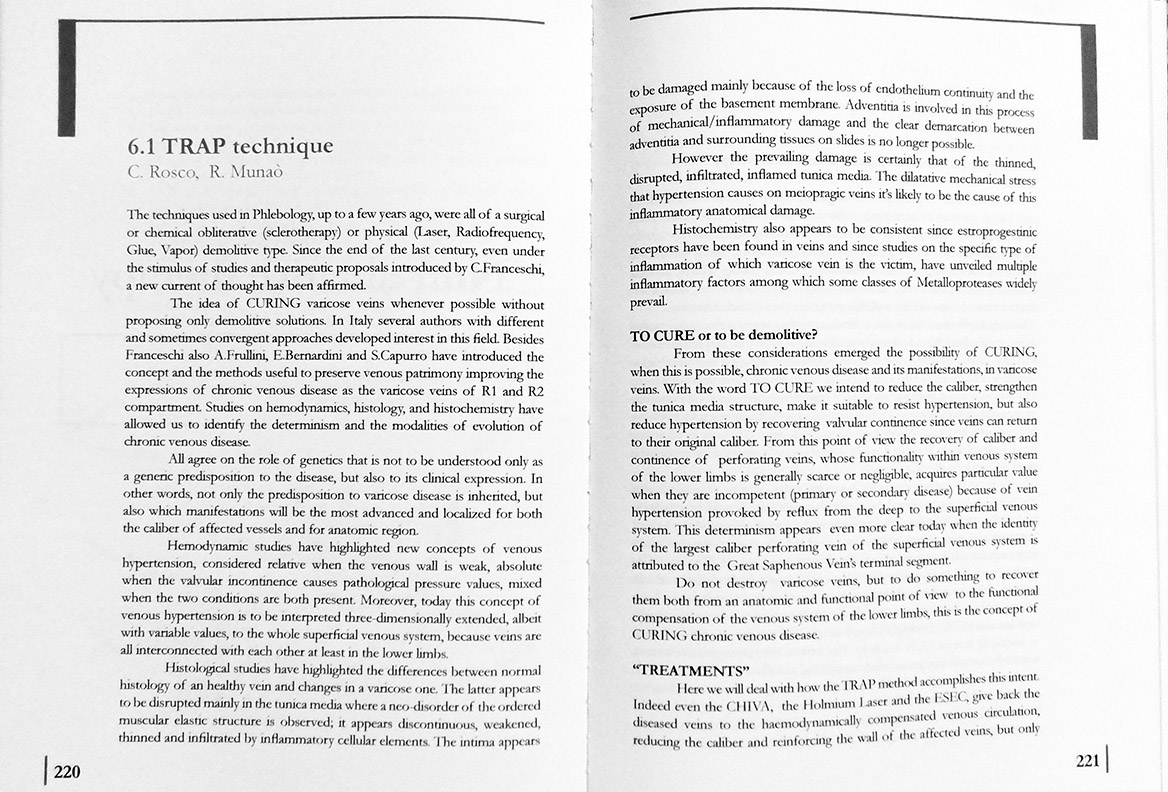Giovanni Nano, Professor of Vascular Surgery at the University of Milan, and the vascular surgeon Dr Daniela Mazzaccaro of San Donato Polyclinic have edited this newly published manual entitled "Updates and Advances in Phlebology".
Written in English, the manual describes the most recent techniques for the treatment of varicose disease. All the new techniques are designed to be less invasive than phlebectomy and sclerotherapy, methods which date back 2000 and 100 years, respectively. Indeed, phlebectomy and sclerotherapy arose at a time when nothing was known about the venous physiopathology of the lower limbs; it was thought that the visible veins were the "pathology" itself, rather than being the effect of the pathology, as we now know they are.
This extremely courageous manual, which deserves our wholehearted approval, was compiled with the contribution of numerous experts of the UIP (International Union of Phlebology).
“Updates and Advances in Phlebology” points the way to new mini-invasive conservative treatments and provides a road map for phlebology in the near future. The book opens a breach in the irrational and conformist belief held by generations of phlebologists, who consolidate and hand on the grave errors made by their hapless masters.
One of the mini-invasive non-obliterative techniques described (p. 220-229) by Dr Claudio Rosco and Dr Roberta Munaò is TRAP (Thee-dimensional Regenerative Ambulatory Phlebotherapy), which was created by the plastic and reconstructive surgeon Dr. Sergio Capurro.
TRAP treats hemodynamic hypertension and, as is known, consists of injecting a regenerative solution (Patent Capurro PCT) three-dimensionally into the entire superficial, perforating and communicating circulation. When this regenerative solution – sodium salicylate in a buffered hydroglycerin vehicle – comes into contact with the superficial and perforating circulation, it shrinks the caliber and strengthens the walls of the perforating veins, restoring their continence. In this way, the anomalous pressure on the superficial circulation is alleviated and the veins disappear from view. There is no need for complex hemodynamic studies in order to perform TRAP; however, the operator must be a good injector and be able to recognize the few signs of the "territory" that reveal the existence of the effects of hemodynamic hypertension.







